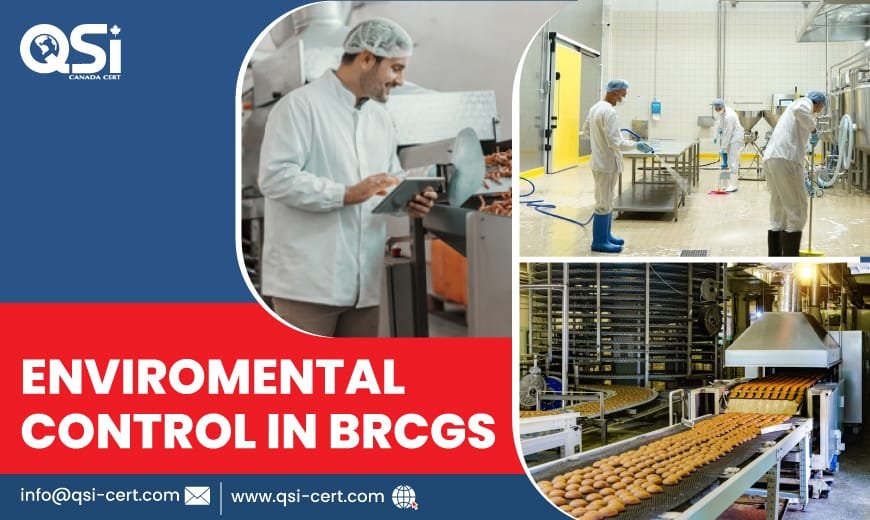
In the modern business landscape, environmental sustainability has become paramount. With increasing awareness of climate change, pollution, and resource depletion, consumers and regulatory bodies alike are placing greater emphasis on companies to adopt eco-friendly practices. Within the realm of food safety and quality management, the British Retail Consortium Global Standards (BRCGS) sets the benchmark for ensuring product safety, legality, and quality. However, alongside these standards, environmental control within BRCGS is emerging as a crucial aspect, addressing the environmental impact of food production and distribution.
Understanding BRCGS Environmental Control
BRCGS offers guidelines and standards that help food manufacturers and suppliers maintain high levels of quality and safety throughout the production process. While the primary focus of BRCGS is on food safety and quality, it also includes clauses and requirements related to environmental control.
Environmental control within BRCGS encompasses various aspects, including
Resource Management: Efficient use of resources such as water, energy, and raw materials to minimize waste and environmental impact.
Waste Management: Proper handling and disposal of waste generated during production processes, with an emphasis on reducing, reusing, and recycling.
Pollution Prevention: Measures to prevent air, water, and soil pollution arising from production activities, including the use of environmentally friendly chemicals and technologies.
Sustainable Sourcing: Encouraging the use of sustainably sourced ingredients and materials to reduce deforestation, habitat destruction, and greenhouse gas emissions.
Carbon Footprint Reduction: Initiatives aimed at reducing carbon emissions throughout the supply chain, including transportation and packaging.
Implementing Environmental Control Measures
To comply with BRCGS standards regarding environmental control, companies must implement robust management systems and procedures. Here are some key steps involved:
Environmental Policy: Develop a clear environmental policy outlining the company’s commitment to sustainability, pollution prevention, and resource efficiency.
Risk Assessment: Identify and assess environmental risks associated with various stages of the production process, including raw material sourcing, manufacturing, packaging, and distribution.
Compliance Monitoring: Regularly monitor and audit environmental performance to ensure compliance with BRCGS standards and legal requirements.
Training and Awareness: Provide training and awareness programs to employees regarding environmental issues, best practices, and their roles in achieving environmental objectives.
Continuous Improvement: Implement mechanisms for continuous improvement, such as setting environmental targets, tracking performance metrics, and implementing corrective actions as necessary.
Benefits of Environmental Control in BRCGS
Adopting effective environmental control measures in accordance with BRCGS standards offers several benefits:
Enhanced Reputation: Demonstrating a commitment to environmental sustainability can enhance the company’s reputation and brand image, attracting environmentally conscious consumers and business partners.
Cost Savings: Improving resource efficiency and waste management practices can lead to significant cost savings through reduced energy consumption, raw material usage, and waste disposal costs.
Regulatory Compliance: Ensuring compliance with environmental regulations and standards mitigates the risk of fines, penalties, and legal liabilities.
Risk Mitigation: By identifying and addressing environmental risks, companies can reduce the likelihood of environmental incidents, such as pollution spills or regulatory violations, which could disrupt operations and damage reputation.
Long-Term Sustainability: Implementing sustainable practices not only benefits the environment but also ensures the long-term viability and resilience of the business in a changing regulatory and market landscape
Conclusion
Environmental control is an integral part of BRCGS standards, aligning food safety and quality management with sustainability objectives. By implementing robust environmental management systems and practices, companies can minimize their environmental footprint, enhance their reputation, and contribute to a more sustainable future. Embracing environmental control within BRCGS not only ensures compliance with regulatory requirements but also fosters innovation and competitiveness in the global marketplace. As businesses continue to prioritize sustainability, environmental control will play an increasingly vital role in shaping the future of food production and supply chain management
